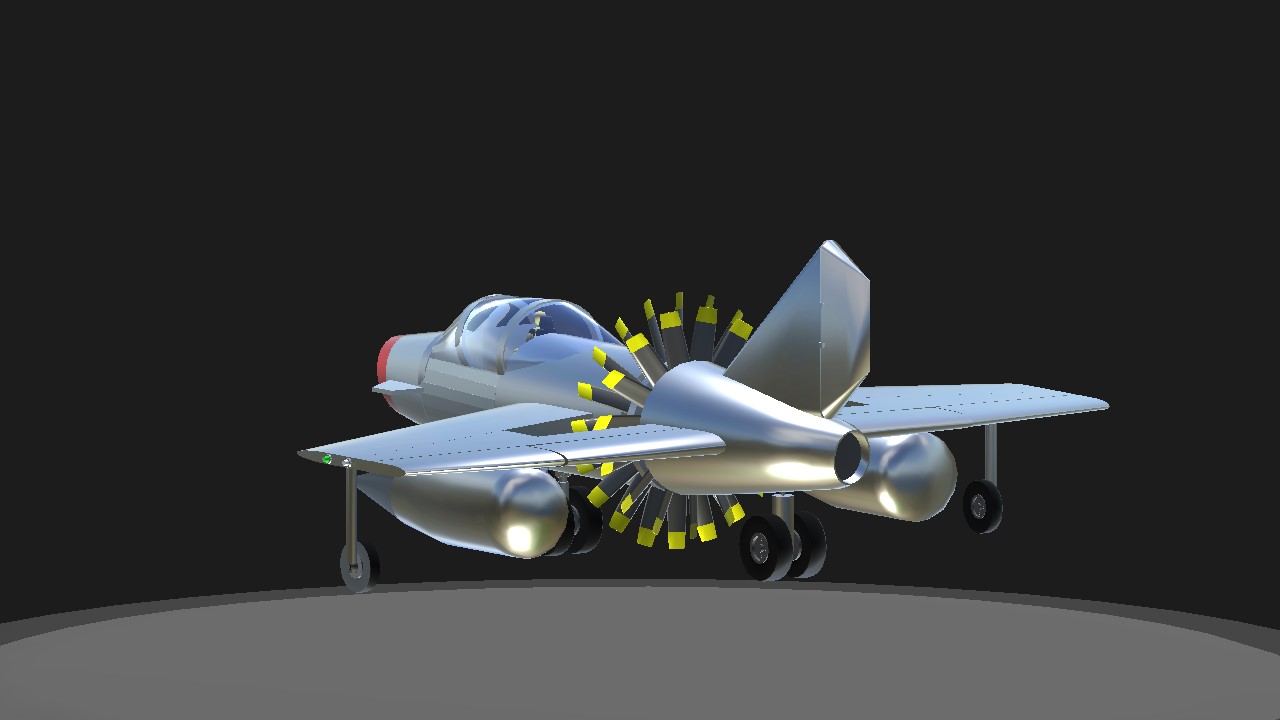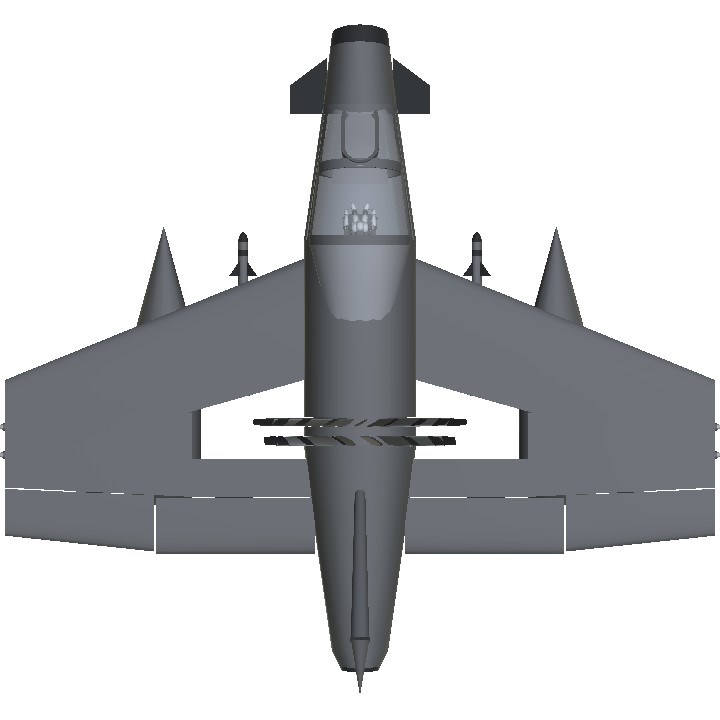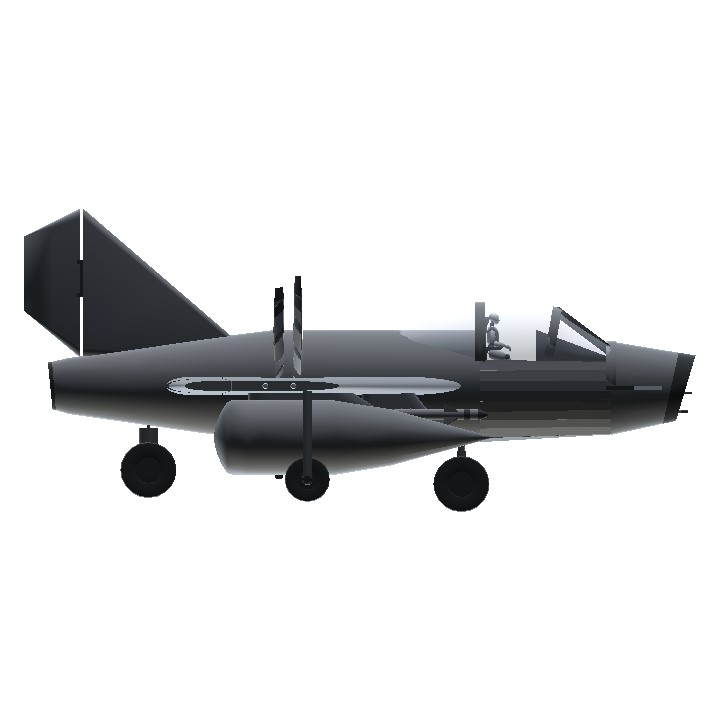So, recently I have fallen in love with the beast that is known as the Propfan. I will go into these in a minute here, but anyways, this is my plane entry for the propeller fighter aircraft challenge!
History of the Propfan
Back in the late 1970s, NASA (working with GE), McDonnell Douglass (working with Pratt & Whitney and Allison) were tasked to create an efficient engine capable of the efficiency of the Turboprop, and the power of a Turbofan
By the early 1980s, NASA and McDonnell Douglass had their engines ready. These engines carried about 20,000 (yes, Twenty THOUSAND) horsepower, and about 30,000 pounds of thrust. The Ultra-high bypass fan (or Open-rotor Fan, or Ultra-ducted fan, or more commonly: Propfan) was seen as the future for airliners, as it was super efficient and VERY powerful. They can withstand upwards of speeds of Mach 0.9, anything more and the propellers will begin to produce shockwaves and vortexes that make the plane unstable, unless you redesign the propellers.
Most of them also were constant-speed (meaning the pitch of the props could be remotely controlled)
Basically, picture a regular Turbofan, and attach a turbine to it that extends outside of the nacelle. Excess thrust is released through the rear of the engine, or some models shot the excess thrust back to the front and at the propellers
But either way, the age of the Propfan never arrived. But the new eco-flying wing airbuses are looking back at them to use them for their efficiency, but making them quiet is the hard part.
Due to environmental standards, noise pollution has to be kept down for planes (which is why supersonic flight is frowned upon, sadly). So, to counteract this, these can have anywhere from 1 to 3 or more "blades." Mine has 2, but there were a few, I believe, that had 3. The first prop is the largest, and it usually spins the fastest. The second spins slower, and is usually smaller and it rotates in the opposite direction of the first. This allows the effects of counterrotating to stay, while minimizing the noise impact.
This Plane
This plane is powered by a single internal propfan producing 2,000 shaft horsepower (with both props, about 4,005 hp) excess thrust is released through the rear (the jets don't actually produce thrust, just the props on my plane)
This allows for a fast flight, and the aircraft has an integral bomb bay in the nose, as well as 4 hardpoints total. It also has 2 autocannons in the nose, a 20mm and a 30mm
It also can easily reach Mach 0.9. That's about 1,150 km/h. So.... I'm not sure if you'll allow it XD
Weapons:
- 2 MultiRole Guardians
- 30mm explosive Autocannon
- 20mm basic Autocannon
- 1 1,000 pound bomb (in the nose)
Controls:
- AG1 - Open Bomb Bay (and activates bomb)
- AG2 - Drop Drop Tanks
- AG3 - Drop/Manual Fire Guardians
- VTOL down = Flaps (don't use them unless you have already touched down)
- Brakes = Airbrakes
- Regular Flight Control
Final Note:
- Yes, this plane is based on the Typhoon (wing style, and canard), MiG 9 (nose/gun layout), Harrier/B-47 (Landing Gear)
I hope y'all enjoy!
Specifications
General Characteristics
- Predecessor Prop Fighter Challenge. [closed]
- Created On Android
- Wingspan 31.6ft (9.6m)
- Length 29.4ft (9.0m)
- Height 13.3ft (4.1m)
- Empty Weight 4,810lbs (2,182kg)
- Loaded Weight 10,169lbs (4,612kg)
Performance
- Power/Weight Ratio 0.662
- Horse Power/Weight Ratio 0.444
- Wing Loading 29.8lbs/ft2 (145.3kg/m2)
- Wing Area 341.8ft2 (31.8m2)
- Drag Points 939
Parts
- Number of Parts 125
- Control Surfaces 0
- Performance Cost 911







Who else has the feeling this is the thunderscreech but even louder
@CursedMikeWazowski thanks! Lol
Unique!
@TheLateJBerry of course, dude!
Thanks! @TheLateJBerry
Thanks! @Thunderhawk
@Astro12 thanks!
It looks very strange, but yes.
It's enrolled.
@GoldenEagle55 lol, thanks!
Interesting
@aaronneit muchas gracias :)
🤩🤩🤩🤩😂😂
@LieutenantSOT no hay de que, por cierto me hago tu seguidor
Thanks! @aaronneit
Thanks! @Spenzerointernational
@PapaKernels lmao
.
thanks!
Nyoom
@PapaKernels